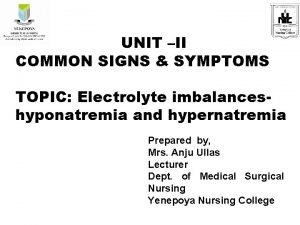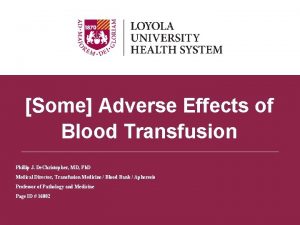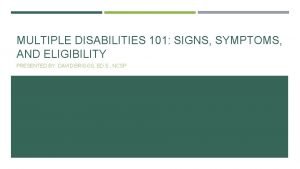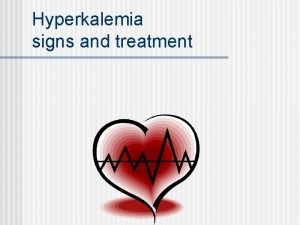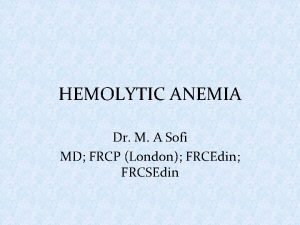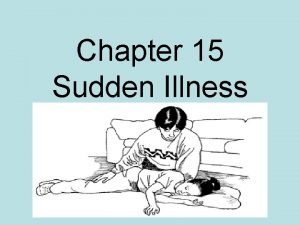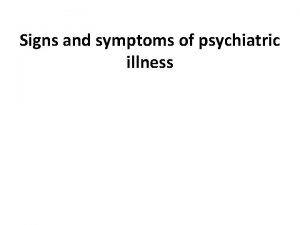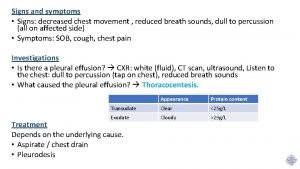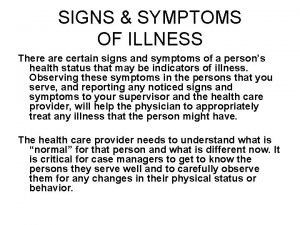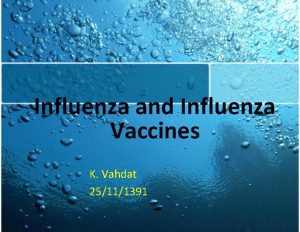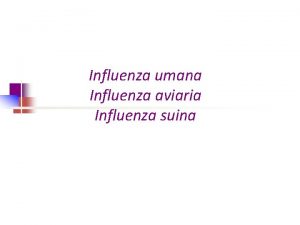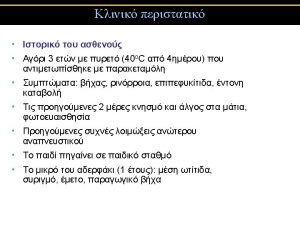Influenza Ieuan Davies Signs and Symptoms Influenza is

















- Slides: 17

Influenza Ieuan Davies

Signs and Symptoms • Influenza is an acute, viral respiratory infection. • Fever, chills, headache, aches and pains throughout the body, sore throat which may lead to bronchitis or pneumonia. • Vomiting and diarrhoea may also occur. • Many deaths have been attributed to influenza

Influenza Pandemics • A pandemic is a world wide spread of infection occurring in many countries simultaneously. • Flu pandemics occur approximately every thirty years. • Flu pandemics occur because a new strain of the virus emerges for which people have no immunity and there are no vaccines available.

Pandemics • New flu viruses occur due to mutation • Mutation occurs because different strains of influenza virus can exchange genes by infecting different animals • Avian influenza viruses can exchange genes with human influenza viruses creating hybrid strains

1918 - 1919 pandemic • This killed between 20 – 40 million people • Face masks were worn but provided little protection against infection

Cause • The cause of influenza is the influenza virus. • Influenza A, B and C viruses are found • Influenza A viruses are associated with serious illness and pandemics

Influenza virus • The flu virus is an RNA virus • The genome codes for five viral proteins and is made of eight fragments. • The virus has a lipid envelope with two glycoproteins present

Flu virus glycoproteins • Haemagglutinin - this glycoprotein plays a part in infection and provides the “H” in the strain type. • Haemagglutinin attaches the virus to cells and allows the viral envelope to fuse with the cell membrane and enter cells. • Neuraminidase – has a mushroom shape, its role is to allow the release of viruses to infect other cells

HN terminolgy • H refers to Haemagglutinin types and each is given a number H 1, H 2 etc, • Neuraminidase is designated N and different forms are available as well e. g. H 5 N 1 (avian) and H 1 N 1. • Different combinations of H and N glycoproteins give rise to different strains

Antigenic shift and antigenic drift • Mutations which produce small changes in antigens are referred to as antigenic drift and these occur in the same strain • Mutations which result in a major change and produce new strains are referred to as antigenic shifts

Life cycle of the ‘flu virus

Transmission • The virus is spread by inhalation or by direct contact. • Reservoirs of infection are primarily humans, but birds and pigs can act as reservoirs. • The multiple host status makes for mixing of flu types.

Prevention • Public education campaigns are used to reduce infection rates • Isolation of infected people is desirable but not always practical • Immunisation

Immunisation • Vaccines are offered to people aged 65 or over (Note: Currently this group has some immunity and are not being targeted) • Clinically at risk groups – asthmatics, immuno-compromised patients, diabetics, people with chronic respiratory disease. • Health care workers • Vaccine effectiveness varies between 40 – 60%

Chemotherapy • Tamiflu (oseltamivir) – inhibits the neuraminidase and thus prevents the spread of the virus in the body • Tamiflu can therefore be used to reduce the length of illness and its transmission within a household • Resistance of H 1 N 1 strain to oseltamivir has been reported at 25%

Conclusion • • Flu can be a bit of a swine! Prevention is better than cure! Avoid contact with infected people. Read how the population of Eyam avoided spreading the plague! • Eyam - Plague Village - Derbyshire

This powerpoint was kindly donated to www. worldofteaching. com http: //www. worldofteaching. com Is home to well over a thousand powerpoints submitted by teachers. This a free site. Please visit and I hope it will help in your teaching
 Sign sign everywhere a sign
Sign sign everywhere a sign Breast pain in pregnancy
Breast pain in pregnancy Hyperkalemia symptoms and signs
Hyperkalemia symptoms and signs Icaada
Icaada Trali
Trali Signs and symptoms of shock
Signs and symptoms of shock Sexual abuse signs and symptoms
Sexual abuse signs and symptoms Kate
Kate Signs and symptoms of multiple disabilities
Signs and symptoms of multiple disabilities Hypocalcemia
Hypocalcemia Hypocalcemia signs and symptoms
Hypocalcemia signs and symptoms Signs hyperkalemia
Signs hyperkalemia Signs of low potassium
Signs of low potassium Evidence of hemolysis
Evidence of hemolysis Dka signs and symptoms
Dka signs and symptoms Name 5 sudden illness.
Name 5 sudden illness. How to diagnose liver disease
How to diagnose liver disease Hyperkalemia signs and symptoms
Hyperkalemia signs and symptoms


